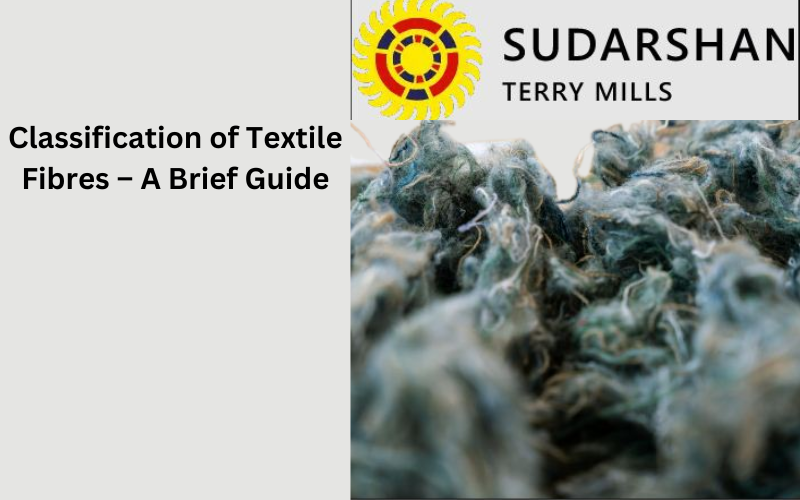
Classification of Textile Fibres – A Brief Guide
The fancy clothing that equips your wardrobe in the modern era is a result of the progress that the textile industry has made so far. Humans are believed to be hailed from a period when clothing was not the first concern for them. It was merely used for the purpose of wrapping their bodies. Time has acted as the biggest player in the domain of clothing. But, did the idea of making clothes ever strike your mind while you check out the flashy displays of apparel windows?
Today folks have access to a large variety of clothes and their byproducts. All the credit goes to the artistry and logic that goes into the construction of cloth. But the manufacturing of heaps of fabrics that helps in making multiple types of clothing starts with a fibre. Thus, the tiny fibre has a huge role to play in the journey of cloth making. We shall explore it right here!
Understanding Textile
Textile is commonly taken as the term that defines woven fabrics. However, textile is a broad term that means the various fibre-based products that are suitable for diverse purposes. It includes all those things that merge to make a fabric.
Textiles are one of the largest industries in many countries across the world. Many retail brands transfer their cloth manufacturing job to countries with a strong textile base. Countries with a stronghold in cloth manufacturing are bringing huge revenue back home. The massive textile industries need the availability of base material, i.e. fibre, without which the manufacturing process cannot be carried further.
What is Fibre in Textile?
Fibre is the processed form of the raw material i.e. the source from where it is derived. It is a strand or thread-like structure that goes into further processing for the construction of fabric. Have you ever observed a cloth keeping it close to your eyes?
You will observe interlocked threads that align in a horizontal or vertical structure. Together the multiple lines of threads create a complete fabric. If you will start pulling out the fabric with the help of your nails, you would observe the hints of strands shooting outward. These are the fibres that make up a thread and later into the fabric.
Fibre is the most important feature of a cloth. It is the first byproduct of the raw material. Without the fibre, making fabric is not possible that leads to the making of final clothing. The quality of fibre decides the quality of the fabric, eventually.
Primary Classification of Fibres
The type of fibre decides the type of clothing that would result in. The names of the fibres resemble the names of the fabrics. The main classification of the fibres divides into two – natural and manmade or synthetic.
Natural fibres are the ones that are derived from living things. These include plants and animals. To understand it better, you can think about the smooth texture of exquisite silks i.e. made from animal-derived fibre, or subtleness of the cotton, i.e. made from the plant-based fibre.
Manmade fibres, also called synthetic fibres, are made in laboratories. They are made by a process of chemical synthesis. Nylon and polyester are the most common examples of synthetic fibres. Therefore, some manmade fibres can be harmful to the environment as well. However, natural fibres are observed and imitated in the process of making manmade fibres.
Besides, some fibres are blended i.e. they are made by a fusion of diverse fibres. Polycot is the fusion of fibres that are from two different types. It is made by combining the fibres of polyester, a synthetic fibre, and cotton, a natural fibre. Fibre blends are used to enhance the color and texture of a fabric. Also, blends help in making a piece of fabric or the actual outfit more affordable.
How many types of fibres are there?
As the fibres are classified into the categories of natural and manmade, there are some more categorizations for them. These are explained below.
Natural Fibres
Obtained from nature, the natural fibres are-
- Vegetable-based fibres: They are obtained from plants and their leaves, such as flax and jute.
- Animal-based fibres: Animal fibres are derived from animal fur. The most common ones are cashmere and alpaca.
- Mineral-based fibres: This variety of fibre is used for making cloth that is more prominent in industrial use.
Manmade Fibres
Made with years of research and experiments in laboratories, manmade fibres include:
- Synthetic fibres: Polyester is the most common example, which is also used for making fibre blends.
- Regenerated fibres:These types of fibres are obtained from the plant cellulose and further processed. Rayon is a more popular kind of regenerated fibre.
Types of Fibre Cloth – The Fabric
The assortment of fabrics that you see in the market is made from a lengthy and complex process. Fabrics are further processed for making designer outfits for different brands as well as multiple kinds of textiles used in different industries.
The classification of fabrics is based on the line of fibre they have used. Therefore, the categories of fabrics are natural and synthetic or manmade.

